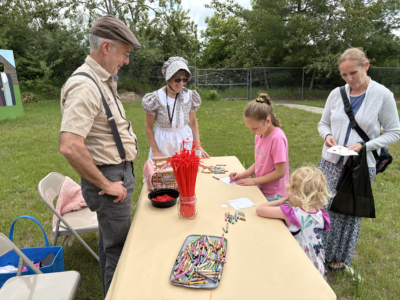State monitors runoff from former tannery

News Photo by Steve Schulwitz The Thunder Bay River is seen recently in Alpena. Small amounts of per- and polyfluoroalkyl substances, also known as PFAS, have drained into the river because of a contaminated site nearby.
ALPENA — The Michigan Department of Environment, Great Lakes, and Energy has taken steps to clean up a site in Alpena where the soil and groundwater were contaminated by per- and polyfluoroalkyl substances, also known as PFAS.
The state is still monitoring water runoff from the former Alpena Hide and Leather tannery to limit the impact on the nearby Thunder Bay River and Lake Huron.
The two primary compounds discovered at the former tannery were perfluorooctanesulfonic acid, also known as PFOS, and perfluorooctanoic acid, commonly called PFOA. Collectively, those compounds are known as PFAS, chemicals used in many materials and products for many years, but used little today.
Alpena Hide and Leather is an active state-funded site, meaning it was acquired by EGLE, which is paying for testing and remediation.
The tannery was built in 1895 on Johnson Street, adjacent to where the Austin Bros. Beer Co. is today. The tannery closed in 1952.
In 2017, groundwater and soil testing showed significant contamination in the soil, groundwater and surface water, and in foam that formed in the river when runoff from the tannery hit currents and wave activity in the river.
According to the state’s website, the highest concentration of PFAS was detected in foam samples from the Thunder Bay River in April 2019, when 1,060 parts per trillion was recorded.
The state has no standard for safe levels of PFAS in river foam, but limits PFAS elsewhere to 6 ppt to 400,000 ppt, depending on the type of PFAS and where it’s found.
The state collected a total of six foam and surface water samples from the Thunder Bay River, taken from various locations above and below the 9th Avenue dam, and all surface water tests showed levels determined to be safe.
The state tested more water from the river in 2019. Samples were drawn from locations near the intersection of Carter Street and 3rd Avenue, behind the hospital, near Rotary Mill Island Park, and on stormwater draining from a culvert near the skate park on 9th Avenue.
EGLE’s tests on Alpena’s municipal water system have shown the amount of the chemicals in the drinking water was classified as non-detectable, meaning any chemicals in the samples are so diluted testing doesn’t register them.
The state also searched for any active drinking water wells that could be impacted, but none were found.
Mitigation and prevention began in 2019, as the state cleaned out two historical stormwater vaults, which are underground structures designed to manage excess stormwater runoff on a developed site.
In early 2020, EGLE collected stormwater samples from the vault as a pilot test to remove PFAS from stormwater. Other technology was installed to monitor water levels to assess discharge from the tannery site.
Alpena’s water and sewer contractor, Suez, takes all the necessary steps to make sure the drinking water in the city and Alpena Township is safe. The township purchases water from the city.
In March 2019, City Engineer Rich Sullenger explained that the city water plant uses carbon to control the quality of the water. He said the process also addresses any PFAS issues.
The city has been using it in the water plant’s treatment process since 1999, Sullenger said. It was originally put into the treatment process to address taste and odor issues occurring at various times of the year.
The carbon cleansing method is also being used on a larger scale in Oscoda as part of the effort to clean up PFAS contamination at the former Wurtsmith Air Force Base.
District Health Department No. 4 Health Officer Denise Bryan said PFAS contamination is a serious health issue, and the department works closely with EGLE to respond to issues and educate the public. She said people who swim, fish, and enjoy other activities in bodies of water where there could be contamination in foam should try to avoid the foam.
“The best thing is to stay away from it and not come into contact with it,” she said. “Be careful not to ingest it, and, if you touch it or get it on you, rinse yourself off in some water away from the foam and shower when you get home. Also, try to avoid your pets from getting into it and call the health authorities and file a report.”
The tannery is one of a pair of PFAS-contaminated sites being monitored by the state in the Alpena area. The other is the Alpena Combat Readiness Training Center. The government is about to launch an evaluation study at the base, which will help the military decide what cleanup measure is needed.



